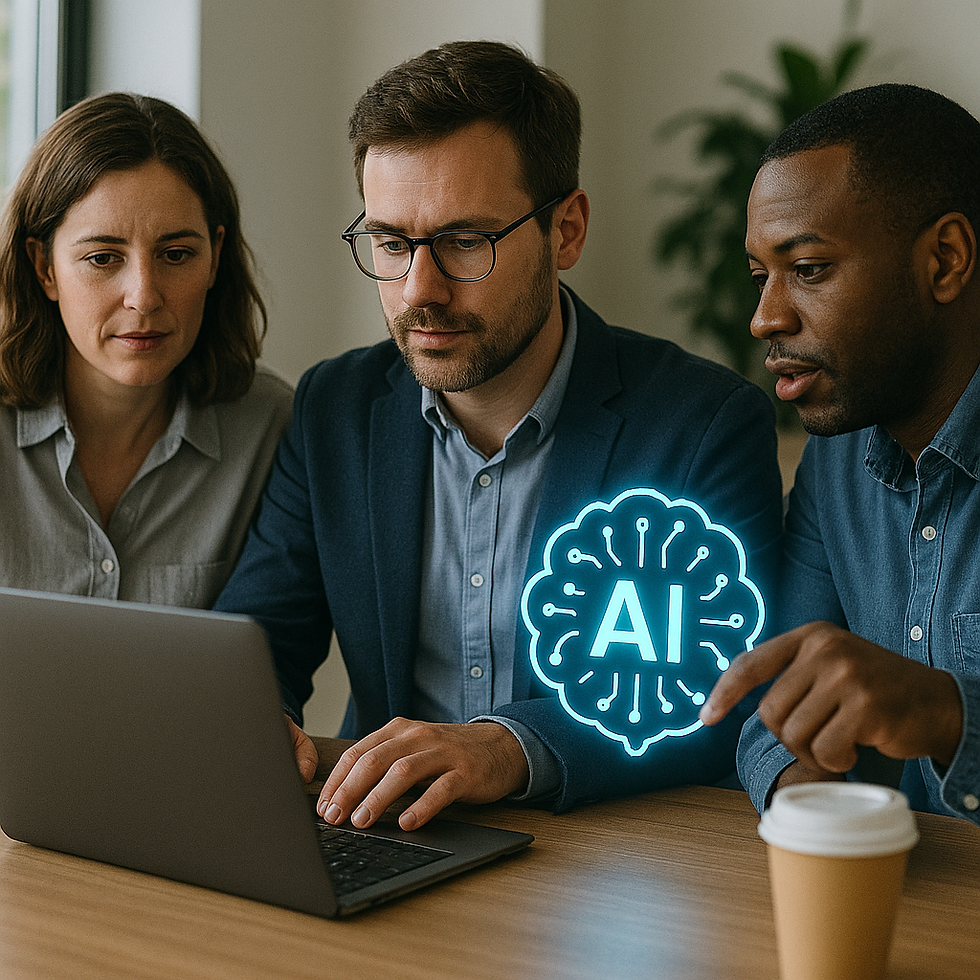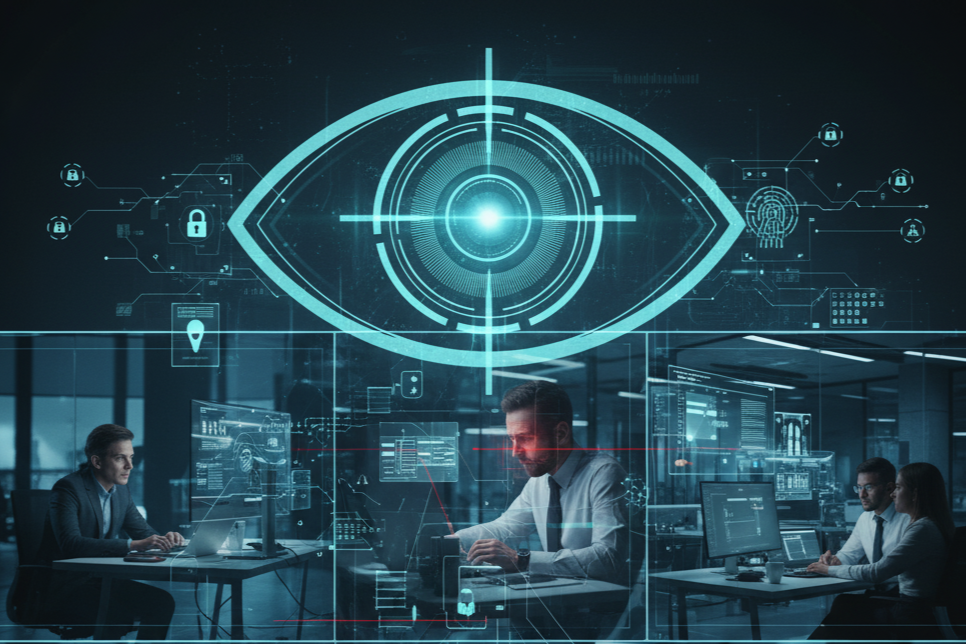Human + AI Collaboration: Better Decisions, Shared Intelligence
- SystemsCloud

- Sep 17
- 3 min read
AI is not replacing humans. It is working with us. The year 2025 has been marked by a shift in how companies approach artificial intelligence. Instead of viewing it as a standalone system, the most successful organisations are building human + AI teams that make better decisions, reduce risks, and share intelligence across the business.

Industry reports from Deloitte and McKinsey confirm that human-AI collaboration is improving decision speed and accuracy, especially in SMEs that have started with targeted AI workflows.
What Does Human + AI Collaboration Mean?
Human + AI collaboration means using AI systems to support, not replace, staff. AI handles repetitive tasks, calculations, and data analysis. Humans apply context, judgement, and creativity.

Examples in practice:
Accountants using AI to flag anomalies in financial data, with partners making the final call.
Solicitors using AI to summarise long case files, freeing time to prepare arguments.
Print firms using AI to check artwork, while operators set production schedules.
SMEs using AI to forecast demand, but leaving managers to weigh supplier constraints.
Why Does This Approach Lead to Better Decisions?
AI models can process far more information than people in a short time. They find patterns in sales, costs, or customer data that are easy to miss. Humans then apply critical thinking to decide what action to take.
How this helps SMEs:
AI scans invoices, bank feeds, or contracts in minutes.
Managers use these insights to identify risks, opportunities, or errors.
Staff focus on work that requires judgement, strategy, or communication.
Summary:
Faster detection of problems
Reduced human error
Clearer evidence to support choices
How Can Shared Intelligence Improve Business Outcomes?
Shared intelligence means both humans and AI contributing knowledge. Humans provide domain expertise. AI provides pattern recognition and real-time alerts. When combined, businesses get a complete view of risks and opportunities.
Business Area | Human Input | AI Contribution | Outcome |
Finance | Tax and compliance knowledge | Automated anomaly detection | Faster, accurate reporting |
Legal | Case strategy | Document summarisation | Quicker preparation |
Production planning | File pre-checking | Less waste | |
General SMEs | Market awareness | Demand forecasting | Balanced decisions |
What Are the Risks of Over-Relying on AI Alone?
AI on its own can misinterpret data, overfit models, or provide contextually wrong recommendations. Human oversight prevents blind spots.
Why this matters:
An AI may flag a financial entry as fraud when it is simply mis-coded.
A legal summary may miss nuances that affect the case.
A production forecast may not account for supply shortages.
Answer: AI is a tool, not a replacement for human intelligence. Human oversight is vital to ensure decisions remain grounded in reality.
How Can SMEs Begin Building Human + AI Teams?
Starting small is the key. Choose one task where AI can help and expand gradually.
Step by step:
Identify a repetitive or time-consuming task.
Test an AI tool that integrates with current systems.
Train staff on how to interpret outputs.
Measure results, then expand to other processes.
Internal Links for Further Reading
Are You Using AI at Work Yet? Practical examples of AI workflows in SMEs.
AI Tools Your SME Can Actually Use (Without Breaking the Budget) ChatGPT, Power Automate, Copilot, and more.
Why IT Shouldn’t Be an Afterthought: Building Tech into Your Growth Plans How proactive planning avoids costly mistakes.
These related posts build an AI knowledge cluster to support SMEs looking at practical adoption strategies.
Why 2025 Is the Year of Human + AI Teams
Gartner’s 2025 survey shows that over 60 percent of SMEs adopting AI are using it in collaborative roles rather than full automation. The trend is clear. Businesses that combine staff expertise with AI support are making faster, smarter decisions while reducing operational risk.
Key Takeaways:
AI augments, not replaces, human intelligence.
Shared intelligence improves accuracy and confidence.
The best results come from combining human oversight with AI analysis.
SMEs can start small and expand with measurable outcomes.








Comments